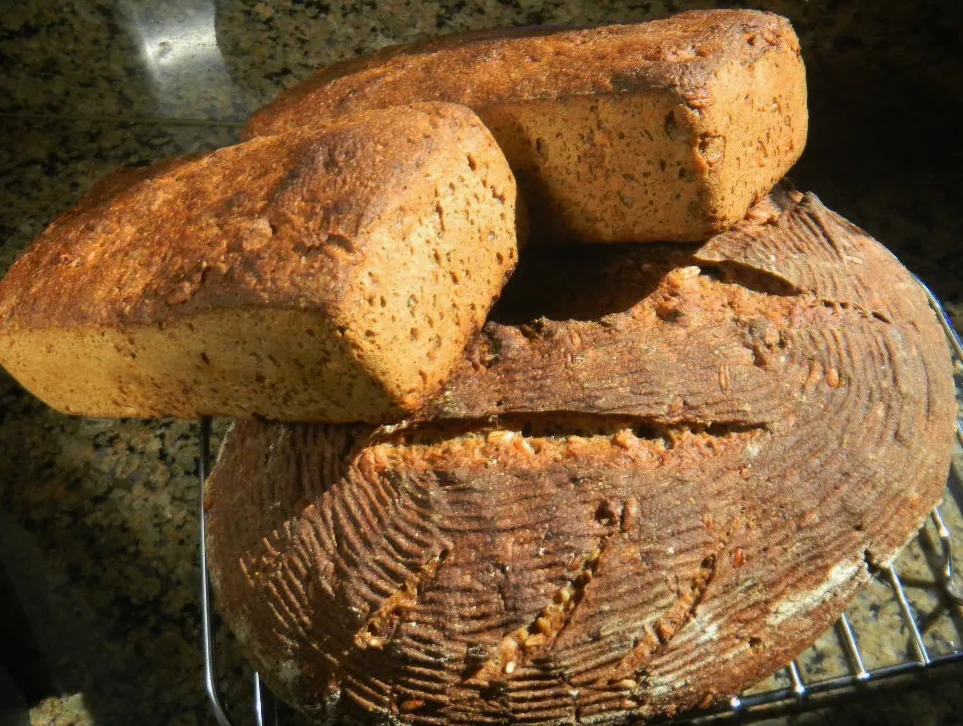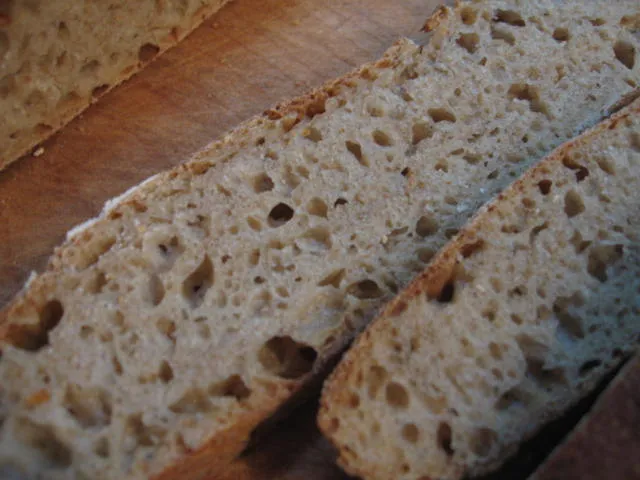The 100% Whole Grain, Multigrain - Mashed by Melon Test - 3 Ways

I started out to see what the keeping qualities and crumb structure of a YW /SD combo levain and a straight YW levain would be compared to a SD levain bread. I figured that if YW alone couldn’t supply a decent keeping quality and was better in combination with SD for this while still mellowing the sour and providing YW’s unique crumb structure - there was no sense making a straight YW bread if you could get the benefits of it and still get the SD keeping quality with a combo levain.
- Log in or register to post comments
- 41 comments
- View post
- dabrownman's Blog








